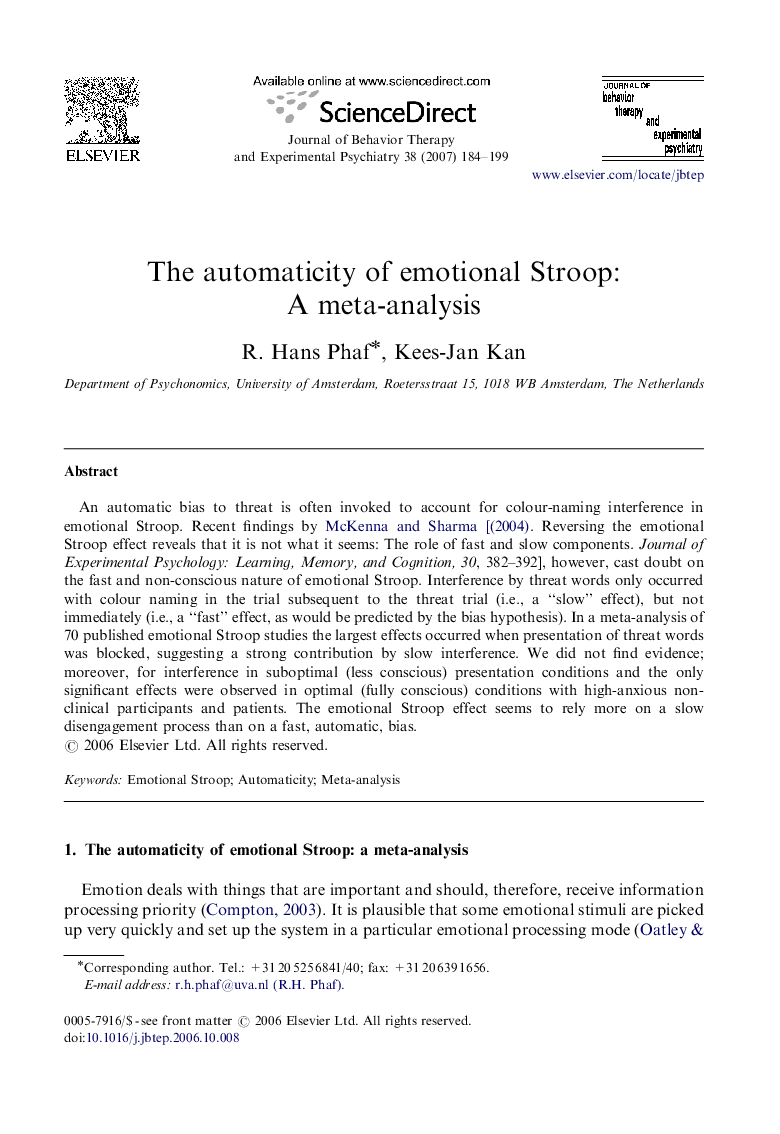| Article ID | Journal | Published Year | Pages | File Type |
|---|---|---|---|---|
| 910641 | Journal of Behavior Therapy and Experimental Psychiatry | 2007 | 16 Pages |
An automatic bias to threat is often invoked to account for colour-naming interference in emotional Stroop. Recent findings by McKenna and Sharma [(2004). Reversing the emotional Stroop effect reveals that it is not what it seems: The role of fast and slow components. Journal of Experimental Psychology: Learning, Memory, and Cognition, 30, 382–392], however, cast doubt on the fast and non-conscious nature of emotional Stroop. Interference by threat words only occurred with colour naming in the trial subsequent to the threat trial (i.e., a “slow” effect), but not immediately (i.e., a “fast” effect, as would be predicted by the bias hypothesis). In a meta-analysis of 70 published emotional Stroop studies the largest effects occurred when presentation of threat words was blocked, suggesting a strong contribution by slow interference. We did not find evidence; moreover, for interference in suboptimal (less conscious) presentation conditions and the only significant effects were observed in optimal (fully conscious) conditions with high-anxious non-clinical participants and patients. The emotional Stroop effect seems to rely more on a slow disengagement process than on a fast, automatic, bias.
